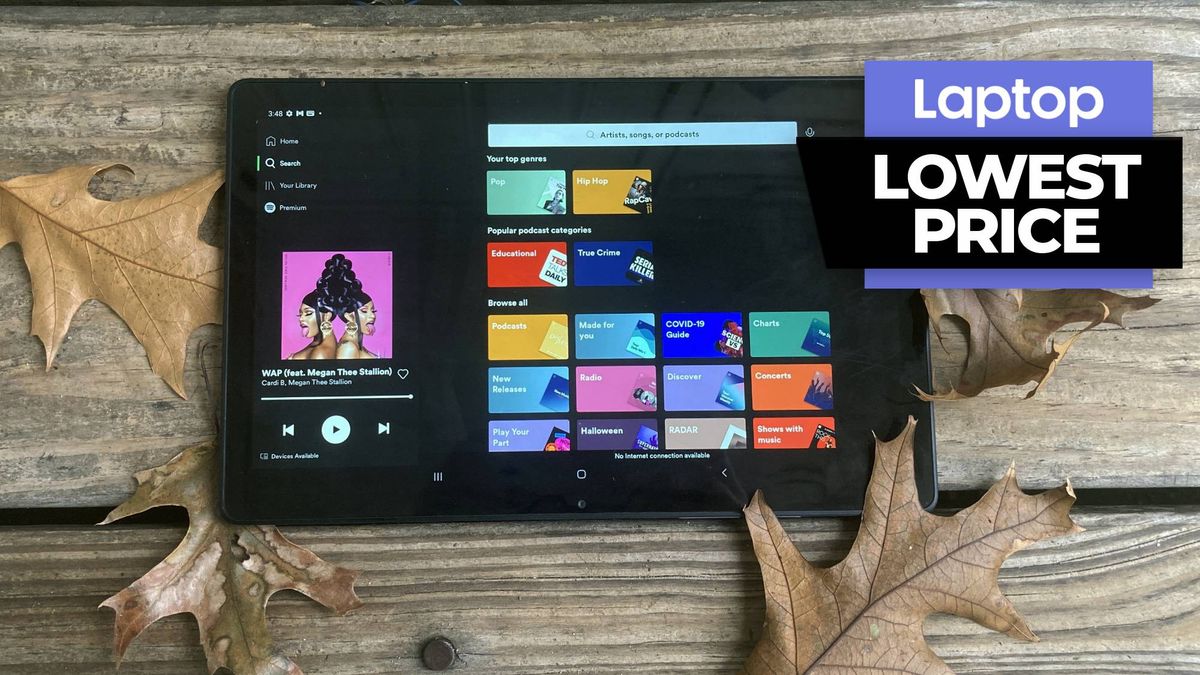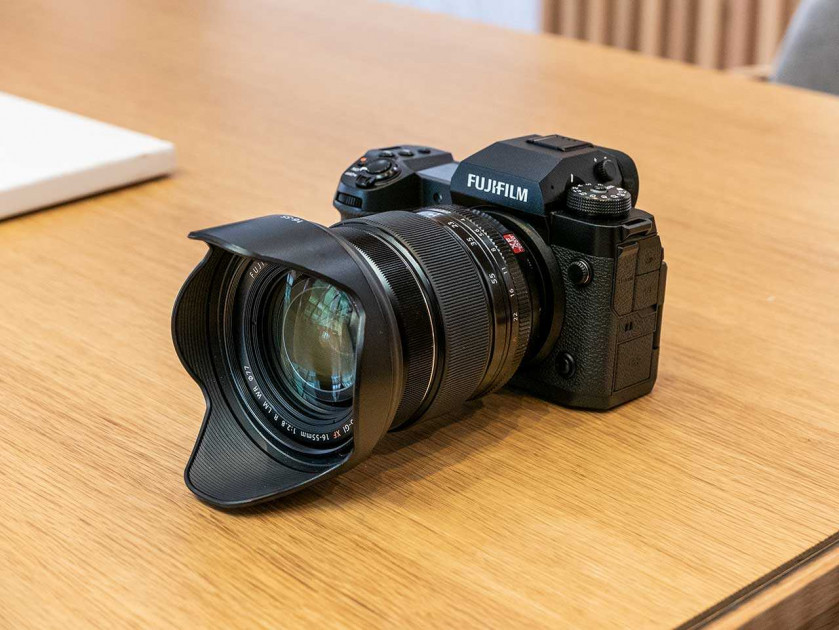
Introduction
The Fujifilm X-H2 is a flagship APS-C sensor mirrorless camera which was released in September 2022. Along with the X-H2S model, it effectively replaces the three-year-old X-H1.
The X-H2 has a brand new 40.2 megapixel, APS-C sized, X-Trans CMOS 5 HR back-side illuminated (BSI) sensor, the latest X-Processor 5 image processing engine, 8K/30p, 6.2K/30p and DCI 4K video recording at up to 60p in 4:2:0 8-bit internally and 4:2.2 10-bit externally via HDMI with recording times of up to 160min, and an extended ISO range of 64-51200.
The XH2 can shoot at 20fps with continuous phase-detect auto-focus and auto-exposure when using the electronic shutter, completely blackout-free with a 1.29x crop, and 15fps continuous shooting when using the mechanical shutter.
Other key features include 5-axis in-body image stabilisation (IBIS) which provides up to 7 shutter steps of compensation for stills, a 5.76M-dot OLED electronic viewfinder with 0.80x magnification and 120fps refresh rate, a tilting 3-inch touchscreen LCD with 1.62-million-dot resolution, and dual UHS-II SD and CFexpress Type B memory card slots.
There are 425 AF points with phase detection pixels across the entire frame (100%) and the auto-focus algorithm has been improved so that it’s 3x faster and offers better eye/face detection than the X-T4.
The X-H2 can automatically detect animals, birds, cars, bikes, planes and trains thanks to the X-Processor 5’s AI deep learning capabilities, a feature that no Fujifilm camera other than the X-H2S has had before.
The X-H2 is the first ever X-Series camera to feature Pixel Shift Multi-Shot, which automatically takes 20 shots to deliver 160 megapixel images for the ultimate quality when detail really matters.
The X-H2 additionally offers an ultra-fast electronic shutter that is capable of exposures up to an incredible 1/180000sec, exposure compensation up to ±5 stops, wi-fi and Bluetooth connectivity, 720-shot battery life and USB-C charging, interval timer shooting, in-camera raw conversion, multiple exposure and panoramic shooting modes, and a wide range of filter effects and film simulation modes.
The Fujifilm X-H2 is available in Black priced at £1899 / $1999 for the camera body only in the UK and US respectively. The XH2 is manufactured in Japan.
Ease of Use
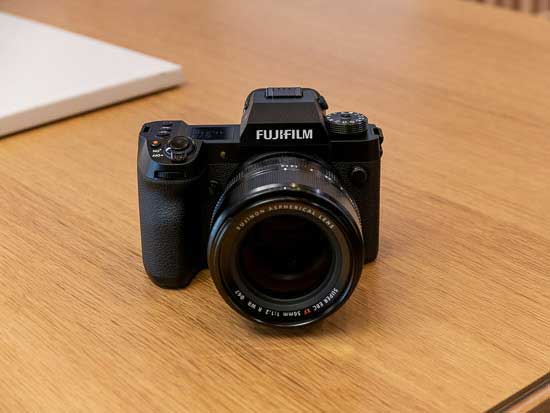 |
Whereas the X-H2S focused on out-and-out speed with its impressive 26 megapixel stacked sensor and 40fps continuous shooting capability, the even newer X-H2 concentrates on delivering sheer resolution and high levels of detail, with a brand new 40-megapixel X-Trans CMOS 5 HR sensor making its debut in the Fuji X-series camera range.
This is a BSI (back-side illuminated) sensor design that has much more of a focus on detail and resolution than out-and-out speed, backed up by the introduction of the Pixel Shift Multi Shot mode which creates 160 megapixel images.
The 40 megapixel sensor also allows the XH2 to record 8K video, actually surpassing the XH2S which can only record up to 6K video because it’s limited by its 26 megapixel sensor.
The X-H2 is the first ever X-Series camera to feature Pixel Shift Multi-Shot, which delivers 160 megapixel images for the ultimate quality when detail really matters.
Previously only seen on the company’s GFX-branded medium-format cameras, in the Pixel Shift Multi-Shot the camera records 20 frames, shifting the sensor by 0.5 pixels between each frame.
The resulting images are automatically combined into one DNG RAW file, which can be output to a desired file format using suitable RAW processing software.
You may not like the less traditional, less Fuji-like user interface or the rather eye-watering price-tag, but if you want the highest-resolution cropped-sensor camera on the market, this is the one to spring for.
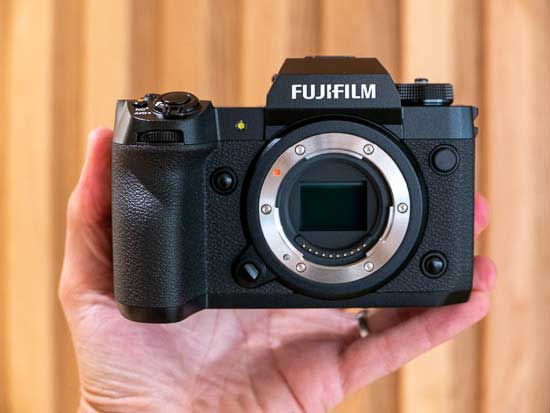 |
The new Fujifilm X-H2 is outwardly absolutely identical to its sister model, the X-H2S, in terms of their external design, size and weight – everything is the same apart from their nameplates.
Measuring 135.5 x 92.9 x 86.9mm and weighing 660g, the new X-H2 is slightly smaller but slightly heavier than the original X-H1 (which measures 140 x 97 x 86 mm and 623g) , although not by that much. If you’re a long-time user of the XH1 than you won’t notice too much difference between them in size and weight.
What will become quickly apparent, though, is the radically different control layout of this latest camera. Long known for their retro styling and plethora of traditional controls, Fuji have decided to drastically pare back the XH2 interface, so much so that it bears little resemblance to its forebear.
Most notably, the classic Fujifilm ISO and Shutter Speed dials that were located on top of the XH1 have made way for a lockable, DSLR-like PASM dial on this new model, positioned to the left of the viewfinder.
In addition to the PASM and video modes, there’s also rather curiously a Filter option and also a huge number of Custom shooting modes – 7 in fact – which is the most that we’ve ever seen on any camera.
The thinking is that you can setup and register this hybrid camera in many different ways for both stills and video, then quickly recall them using the shooting mode dial.
It still remains to be seen how fans react to what is quite a radical departure from the usual Fujifilm blueprint, but it certainly makes a lot of sense for a camera that will potentially be used to capture a wide variety of subjects in a wide variety of ways.
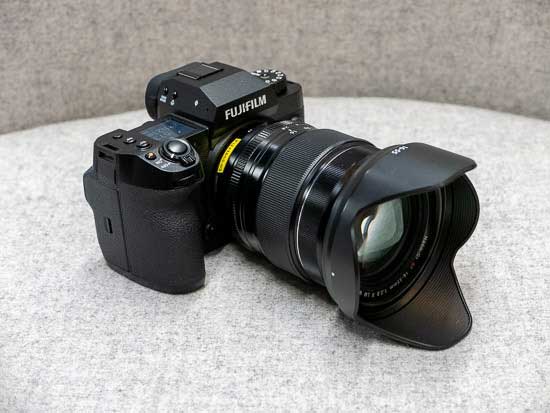 |
The X-H2 has a large, sculpted hand-grip at the front. You can definitely fit three fingers on it, maybe even four depending on your hand size, with your little finger naturally curling underneath the bottom of the body. There’s also a prominent grip on the rear of the camera for your right thumb.
A textured faux-leather surface runs around the full width of the camera, with two metal eyelets on either side of the body used for connecting the supplied shoulder strap.
Other key changes to the X-H-series user interface include the addition of a lot more Function buttons, again intended to add as much flexibility to the setup of the camera as possible, including the replacement of the MCS dial on the front of the X-H1 with an unmarked Function button on the X-H2.
The rear of the camera has also been substantially tweaked, with the thumb operated joystick sitting much higher than before and the AF On and AE Lock buttons more conveniently positioned around it.
Over on the right of the top panel, the XH2 retains the very useful top-panel LCD, but it’s now been move directly alongside the viewfinder hump and been joined by a column of ISO, white balance and function buttons, along with a new one-touch video-record button that sits alongside the shutter release button, which is encircled by the Off/On switch.
Exposure compensation and shutter speed are now set using the front and rear command dials rather than via external controls as on the X-H1, with the aperture control dependent upon whether the attached lens has an aperture ring or not (the majority of Fuji’s lenses do) and whether it’s set to Auto or not.
Overall, the X-H2 reminds us of the X-S10, which also eschewed Fuji’s standard ISO dial, Shutter Speed dial and Exposure Compensation dials. Those changes were made to that particular camera in the pursuit of simplicity and affordability, though, whereas with the X-H2 they’ve been made to enable the camera to be more versatile and quicker to use.
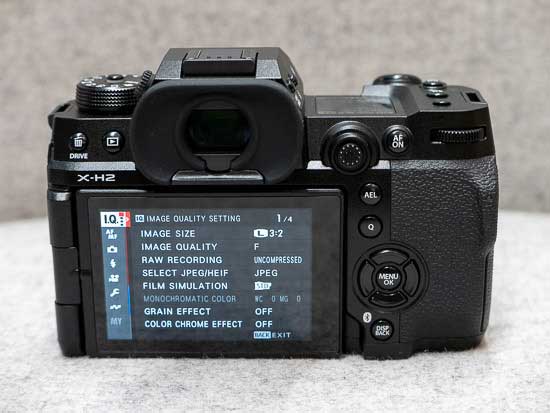 |
The X-H2 offers a slightly different standard sensitivity range of ISO 125 to ISO 12,800 to the X-H2S, which can be expanded down to ISO 64 and up to ISO 51,200. This makes the X-H2 well suited to low-light shooting, allowing you to hand-hold the camera in places where you’d usually be reaching for a tripod or other support.
Fuji’s clever ISO Auto Control setting allows you to set a maximum sensitivity (up to 6400) and a minimum shutter speed (1/30th is a good starting point), with the camera over-riding your ISO choice if it thinks you’re being too ambitious whilst maintaining a shutter speed that won’t introduce camera shake.
The image sensor used in the X-H2 is the next generation 40.2 megapixel, APS-C sized, X-Trans CMOS 5 HR back-side illuminated (BSI) sensor, making its debut in the Fuji X-series camera range.
Although it can’t match up to the headline-grabbing 40fps continuous shooting speed offered by the X-H2S and its stacked sensor, the new XH2 is certainly no slouch when it comes to burst sequences.
The X-H1 was a relatively fast camera when it was released in 2018, capable of shooting at 14fps using the electronic shutter or 8fps with the mechanical shutter., but the new X-H2 with the X-Processor 5 on-board ups the ante considerably.
In comparison, the XH2 can shoot at 20fps when using the electronic shutter, completely blackout-free with continuous phase-detect auto-focus and auto-exposure, rather than being locked at the first frame. Unlike the XH2S, a modest 1.29x crop is applied though. It also offers a much faster 15fps continuous shooting speed when using the mechanical shutter, this time without any crop.
This makes the X-H2 one of the fastest cameras that Fujifilm have ever made in terms of burst shooting, second only to the X-H2S in fact.
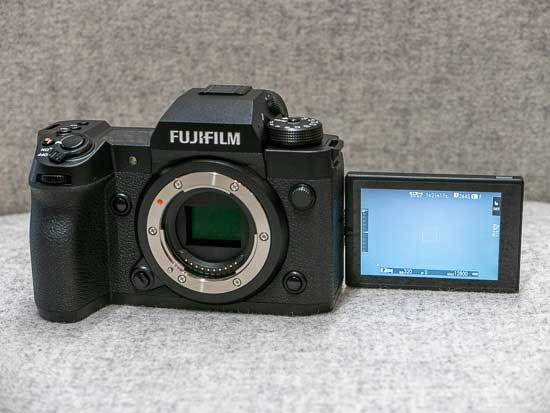 |
Depending on your subject, being able to pick from 20 incrementally different shots could mean the difference between a near-miss and a “perfect” image, although you’ll need large capacity, high-speed CFexpress Type B memory cards to take full advantage of the sheer speed on offer.
To help with capturing the precise moment, the X-H2 also a clever Pre-shot burst shooting mode, with the camera constantly filling the buffer while your half-press the shutter button, and then keeping the most recent ones taken 0.5-1 seconds before a full press of the shutter button, eliminating any camera and human-added delay. Note that this feature only works with the electronic shutter.
Thanks to its 40 megapixel sensor, the XH2 offers a greater number of PDAF points (3.3 million) than the XH2S. Fujifilm say that the new model isn’t quite as fast at tracking moving subjects as the X-H2S, though.
The X-H2 actually has two kinds of shutter, mechanical and electronic. When using its mechanical focal-plane shutter, it has a top shutter-speed limit of 1/8000th second in all shooting modes.
There’s no built-in ND filter, so if you want to use a very fast lens in very bright sunlight whilst using the mechanical shutter, then it’s a good idea to buy an actual glass ND filter. The X-H2 has a flash-sync speed of 1/250th second with the mechanical shutter and 1/125th second with the electronic shutter.
The X-H2 also has a completely silent electronic shutter which provides a much, much faster top shutter speed of 1/180,000th second. This allows you to continue shooting wide-open with fast aperture lenses in the brightest of conditions without having to resort to fitting a glass ND filter or using an external flash and lights.
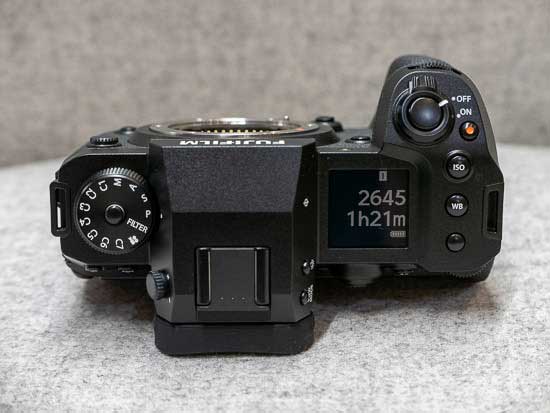 |
To make the camera even less obtrusive, when the electronic shutter is selected, there’s a Silent menu option which turns off the speaker, flash, AF-assist lamp and most importantly the shutter-release sound, instantly making the X-H2 perfectly suited to more candid photography.
It’s all very well being able to record at 20fps, but unless the camera can quickly, accurately and reliably focus on whatever fast-moving subject you’re trying to capture, it’s all for nothing.
Thankfully, although the new X-H2 has the same hybrid autofocus system with up to 425 selectable phase detection and and contrast detections points as the X-H1, X-T4 and X-Pro3 models, Fujifilm have made a number of really significant improvements to make it their best AF system yet.
Chief amongst these is the debut of subject-based computational AI, with the XH2 being able to automatically detect animals, birds, automobiles, motorcycles and bikes, airplanes and train.
You do have to specifically choose which of those you want to track from the Subject Detection Setting menu, but as previously mentioned, you can easily register different settings to the custom modes on the shooting mode dial to avoid having to constantly dive into the menu.
Turning this feature on resulted in a super-high hit rate in terms of auto-focusing, with the camera often able to focus on the subject before we’d even spotted it ourselves.
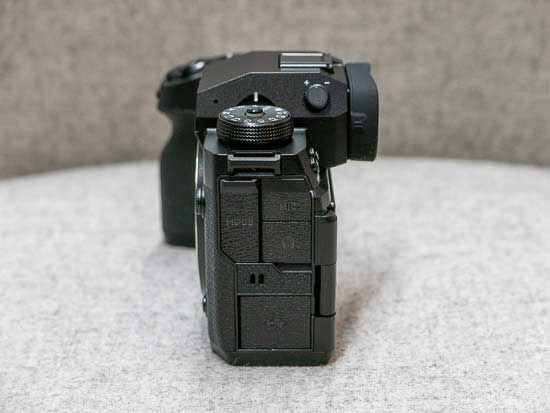 |
The improved auto-focus algorithm that’s said to be 3x faster than the X-T4 and particularly the subject detection modes help to ensure that most of your images are sharp.
Also helping to keep things sharp is the XH2′ 5-axis in-body image stabilisation (IBIS) system. The original X-H1 was the first ever Fuji mirrorless camera to feature In-Body Image Stabilization (IBIS), and the X-H2 joins it and the X-H2S, X-T4 and X-S10 as the fifth Fuji camera to offer it.
And as with most of its other key features, this new model ups the ante considerably. Whereas the X-H1 only provided up to 5.5 shutter steps of compensation for stills, the X-H2 provides up to a maximum of 7 stops, 1.5 stops better and the joint-best of any current Fujifilm camera.
Similarly, the OLED electronic viewfinder on the X-H2 has greater 5.76M-dot resolution, larger 0.80x magnification and a faster 120fps refresh rate than the X-H1, which had a 3.68M-dot EVF with 0.75x magnification and 100fps refresh rate.
Perhaps more importantly for a hybrid stills and video camera, Fuji have made an important change to this model’s LCD screen. The older X-H1 had a clever three-direction tilting LCD screen, but it didn’t tilt out to the side like the one on the new XH2, which has a fully articulating, vari-angle, 3-inch LCD screen with 1.62M-dot resolution.
You can flip out the screen to the side, rotate it forwards for easier operation when pointing the camera at yourself, and fold it flat against the back of the camera to stop it from getting scratched, which proves to be a more versatile screen for vlogging, movie shooting and photography in general.
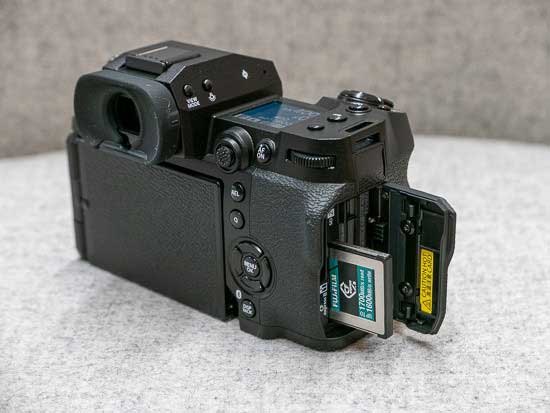 |
The X-H2S offers a better video mode than the X-H2 and is definitely the one to buy if you’re predominantly a videographer, although this new model certainly gives it a run for its money predominantly thanks to its 40 megapixel sensor.
The newer camera offers a highest quality rate of 8K/30p with no crop recorded in 4:2:2 10-bit internally for approximately 160 minutes. The XH2S can’t record at all in 8K because of its lower resolution 26 megapixel sensor, topping out at 6K/30p.
Combined with a compatible HDMI recording device from Atomos or Blackmagic Design, 12-bit RAW video output from the X-H2 can be recorded as Apple ProRes RAW or Blackmagic RAW at resolutions and frame rates of up to 8K and 29.97 frames per second.
The X-H2 also features a digital zoom function that uses the camera’s 40.2MP sensor to deliver up to 2x of digital zoom with little to no loss in resolution, when recording video in 4K.
Thanks to its stacked sensor design, the XH2S offers a faster rolling shutter than the X-H2 (1/180s vs 1/88s in 4K), though, and also offers greater dynamic range (14+ stops versus 13+ on the XH-2). For 8K recording the rolling shutter on the X-H2 is even worse at 1/33s.
Most crucially, the XH2S can record in 4K at up to 120fps, whereas the X-H2 is limited to 4K/60p, which for many videographers will be more important than having 8K recording.
Both cameras can take advantage of a special fan accessory which screws into the back of the camera and improves the maximum recording time from 17 to 51 mins at 40 Celsius.
The X-H2 features both built-in wi-fi and Bluetooth connectivity. The latter option creates a constant, low-power connection between the X-H2 and a smartphone/tablet to transfer images and video using the Fujifilm Camera Remote smartphone app, while the former allows you to remotely control the X-H2 via a 2.4Ghz wi-fi connection using a smartphone or tablet and the Fujifilm app, and transfer images and video from one device to the other.
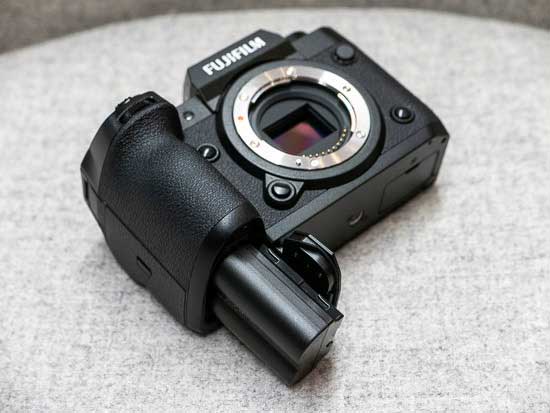 |
Another key change to the design of the X-H2 is memory cards, specifically the type that it uses rather than the number. Both the original X-H1 and this new model have dual memory card slots, but whereas the older model had two UHS-II SD format slots, the X-H2 has one UHS-II SD slot and one CFexpress Type B slot.
So if you want to take advantage of all the speed and resolution advantages that the XH2 offers, you’ll need to invest in some CFexpress Type B memory cards and probably a new card reader too, as the camera simply can’t shoot and record at its fastest rates if you only use SD cards.
Fujifilm have also paid close attention to the X-H2’s battery life, so they’ve switched from using the smaller capacity NP-W126S battery that the X-H1 used to exactly the same NP-W235 batteries as the X-T4.
This offers a CIPA-rated battery life of up to 720 shots on a single charge in normal mode on the X-H2, with real-life usage yielding even longer life. The X-H1 was rated at only 310 shots.
The XH2 can also be powered and charged via a USB-C connection, which is useful if you’re out and about and have a compatible power-bank to plug the camera into.
If you really want to extend the battery life, there’s a Vertical Battery Grip (VBG-XH) available for the X-H2 which accepts two NP-W235 rechargeable lithium-ion batteries to extend the life for up to 1700 frames between recharges.
A metal tripod mount is positioned inline with the centre of the lens and far away from the battery/memory card compartment, so you don’t have to remove the camera from the tripod to change the battery or the memory card.
Image Quality
All of the sample images in this review were taken using the 40.2 megapixel Fine JPEG setting, which gives an average image size of around 18Mb.
The Fujifilm X-H2 produced images of outstanding quality. It records noise-free JPEG images from ISO 64 up to ISO 3200, with a little noise at ISO 6400 and more visible noise at the faster settings of ISO 12800 and 25600 (ISO 51200 is best avoided), an amazing performance for a camera with a 40 megapixel APS-C sensor. The RAW files were also excellent, exhibiting more noise than their JPEG counterparts but still producing very usable images from ISO 64-6400.
The night photograph was excellent, with the maximum shutter speed of 30 seconds being long enough for most after-dark shots, and the Bulb mode allowing much longer exposures if required. The Dynamic Range and HDR settings subtly improve detail in the shadows and highlights, while the extensive range of Film Simulation modes hark back to a bygone era, and the Advanced Filters allow you to have a little fun with your images in-camera.
Noise
There are 11 full ISO settings available on the Fujifilm X-H2 for JPEGs and RAW files. Here are some 100% crops which show the noise levels for each ISO setting.
File Quality
The Fujifilm X-H2 has 2 different image quality settings available, with Fine being the highest quality option. Here are some 100% crops which show the quality of the various options, with the file size shown in brackets.
| Fine (18Mb) (100% Crop) | Normal (9.1Mb) (100% Crop) |
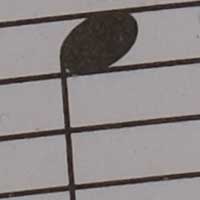 |
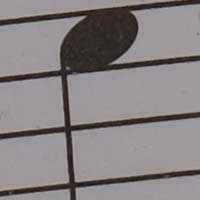 |
| RAW (85.5Mb) (100% Crop) | |
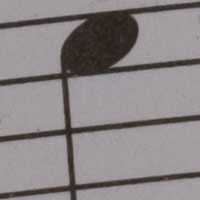 |
Night
The Fujifilm X-H2’s maximum shutter speed is 30 seconds in the Time shutter speed mode, and there’s a Bulb mode which allows exposures up to 60 minutes long, which is excellent news if you’re seriously interested in night photography. The shot below was taken using a shutter speed of 15 seconds at ISO 125.
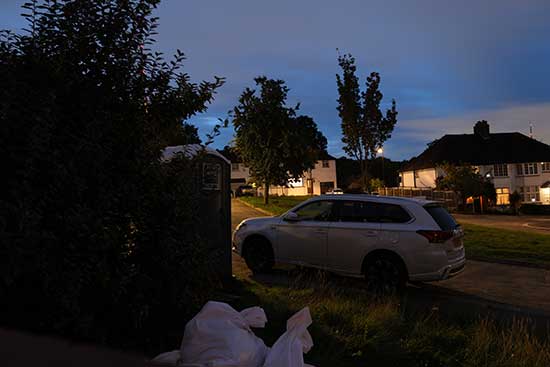
Pixel Shift Multi Shot
Pixel Shift is a special Multi-Shot function that can be used to create 160 megapixel images!
The camera’s built-in IBIS unit is used to shift the image sensor by up to a pixel in various directions during the sequence of 20 shots.
You then need to download the Pixel Shift Combiner software from Fujifilm.com, manually select the 20 files that make up each Pixel Shift shot, and the software will then automatically combine them into a single DNG file.
Multiple Exposure
The Fujifilm X-H2’s Multiple Exposure mode combines up to 9 different images together in-camera to create one composite image, with four different ways of combining them – Additive, Average, Bright, Dark.
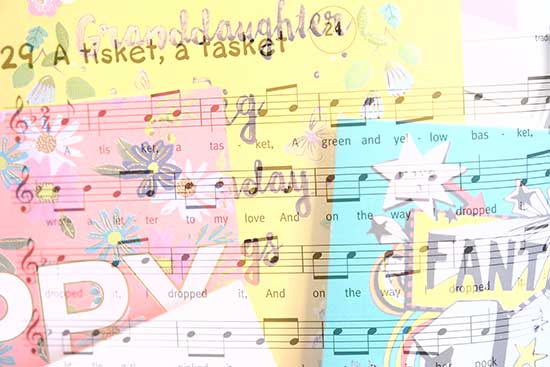
Dynamic Range
The Fujifilm X-H2 has three dynamic range settings – 100% (on by default), 200%, and 400% – and an Auto setting if you want to let the camera take control.
These settings gradually increase the amount of detail visible in the shadow and highlight areas, with the side-effect of more noise appearing in the image. Note that you can’t actually turn this feature off. All three settings are available from ISO 500 upwards.
HDR
The Fujifilm X-H2 has a High Dynamic Range mode with five different settings – AUTO, 200%, 400%, 800%, 800%+. The camera takes three shots with different exposures, changing the shutter speed for each one, and then combining them in-camera.
Film Simulations
The Fujifilm X-H2 offers 19 different film simulation modes to help replicate the look of your favourite film stock from the past.
Advanced Filters
The Fujifilm X-H2 offers 13 different creative filter effects which can be previewed on the LCD screen and/or in the EVF before taking a photo.
|
Toy Camera |
 |
|
Miniature |
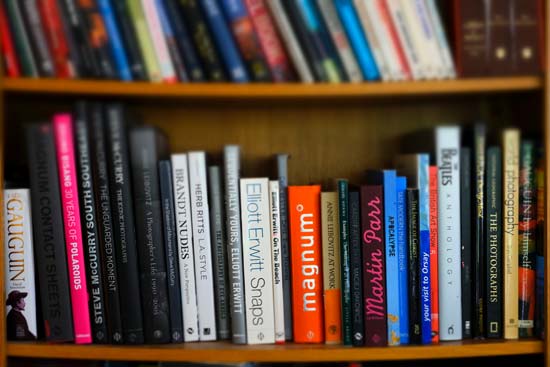 |
|
Pop Color |
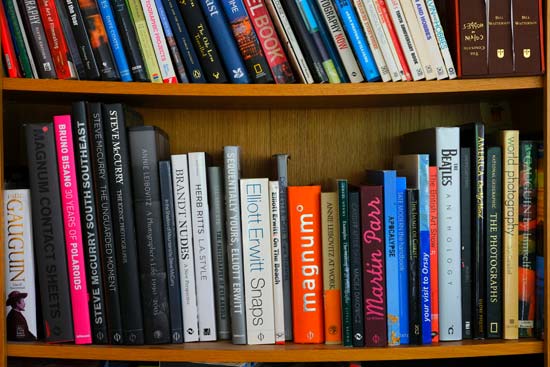 |
|
High-Key |
 |
|
Low-Key |
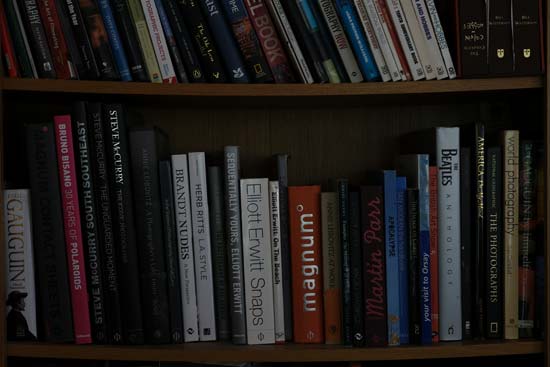 |
|
Dynamic Tone |
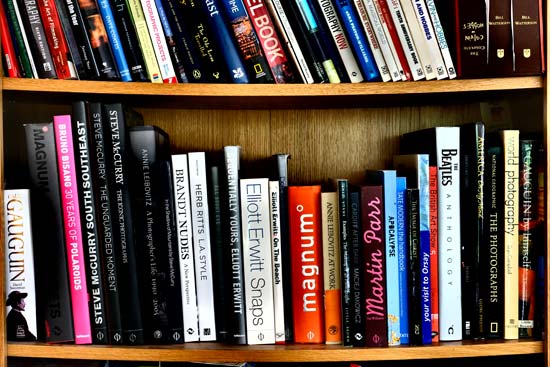 |
|
Soft Focus |
 |
|
Partial Color (Red) |
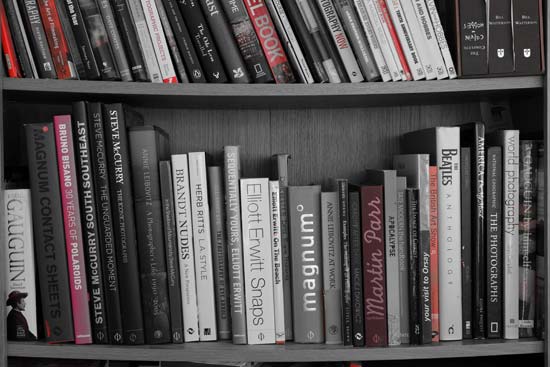 |
|
Partial Color (Orange) |
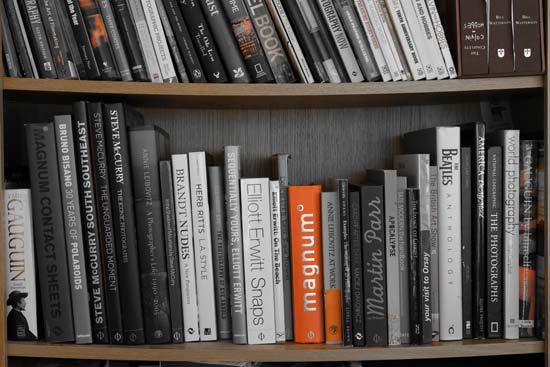 |
|
Partial Color (Yellow) |
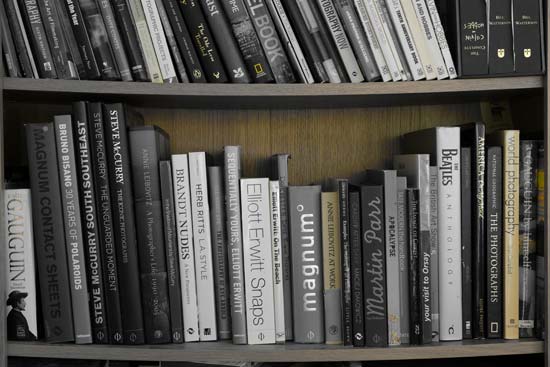 |
|
Partial Color (Green) |
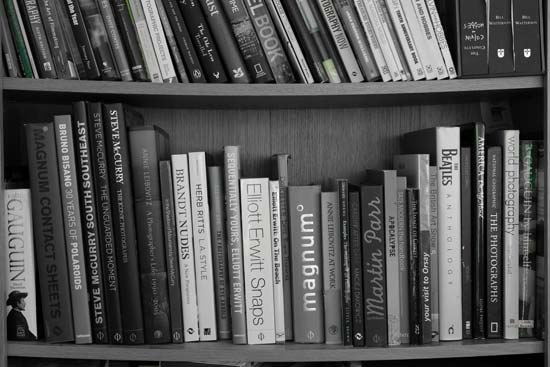 |
|
Partial Color (Blue) |
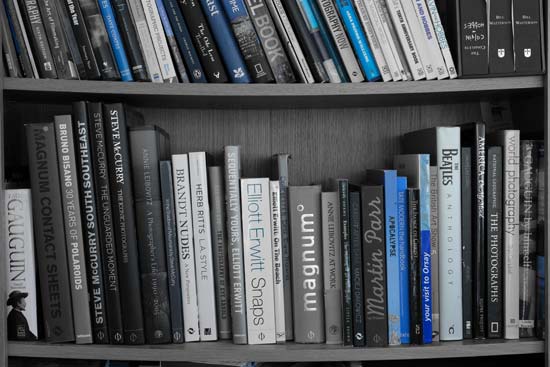 |
|
Partial Color (Purple) |
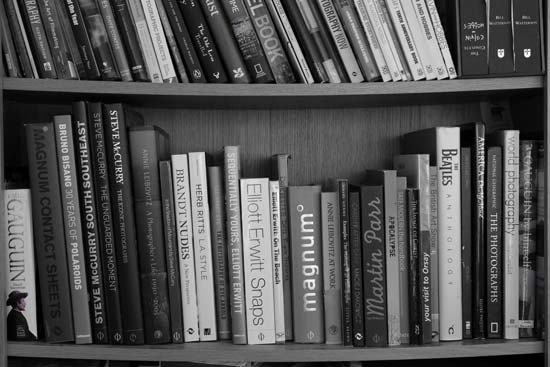 |
Sample Images
This is a selection of sample images from the Fujifilm X-H2 camera, which were all taken using the 40.2 megapixel Fine JPEG setting. The thumbnails below link to the full-sized versions, which have not been altered in any way.
Sample RAW Images
The Fujifilm X-H2 enables users to capture RAW and JPEG format files. We’ve provided some Fujifilm RAW (RAF) samples for you to download (thumbnail images shown below are not 100% representative).
Sample Movies & Video
This is a sample 8K movie at the quality setting of 7680×4320 pixels at 30 frames per second. Please note that this 16 second movie is 204Mb in size.
This is a sample 6K movie at the quality setting of 6240×3510 pixels at 60 frames per second. Please note that this 16 second movie is 204Mb in size.
This is a sample 4K movie at the quality setting of 3840×2160 pixels at 60 frames per second. Please note that this 16 second movie is 204Mb in size.
This is a sample 4K movie at the quality setting of 3840×2160 pixels at 30 frames per second. Please note that this 15 second movie is 192Mb in size.
This is a sample slow-motion movie at the quality setting of 1920×1080 pixels at 120 frames per second. Please note that this 160 second movie is 393Mb in size.
Product Images

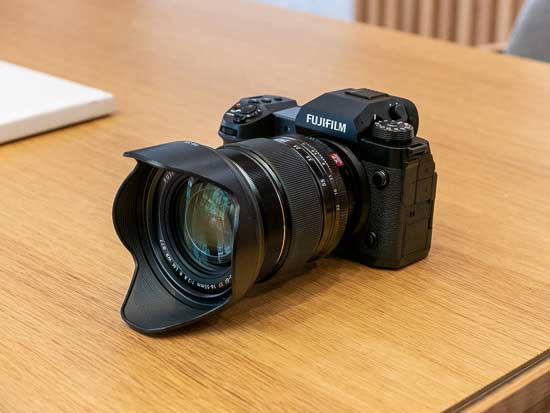
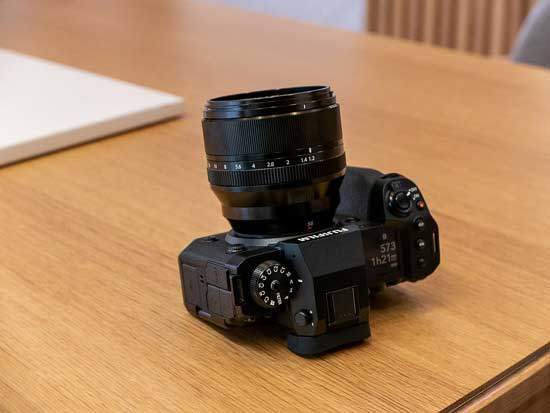
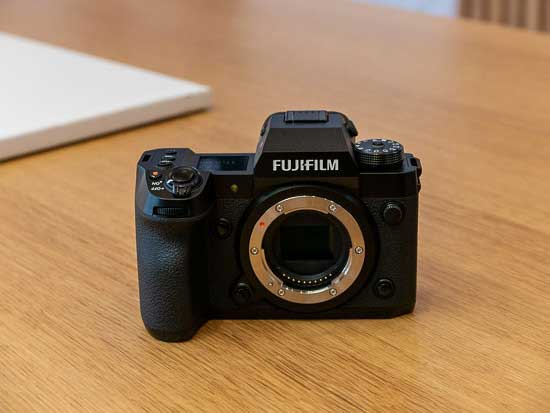
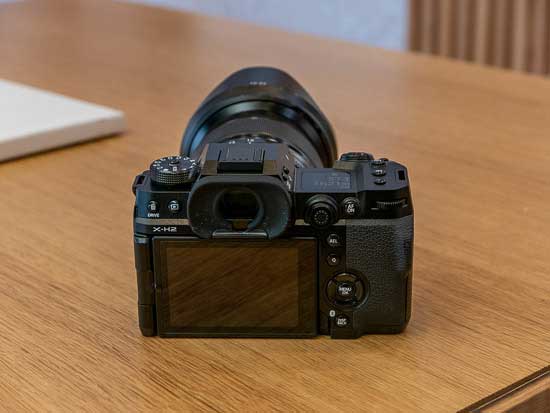

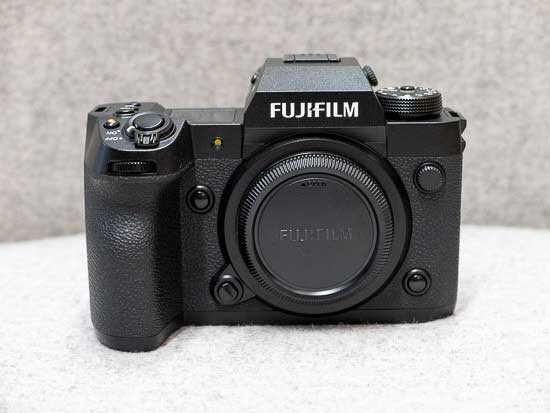
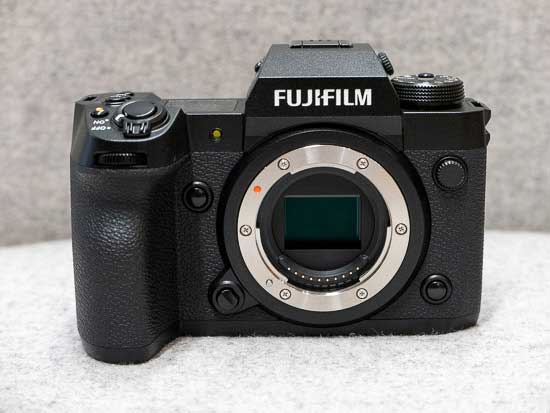
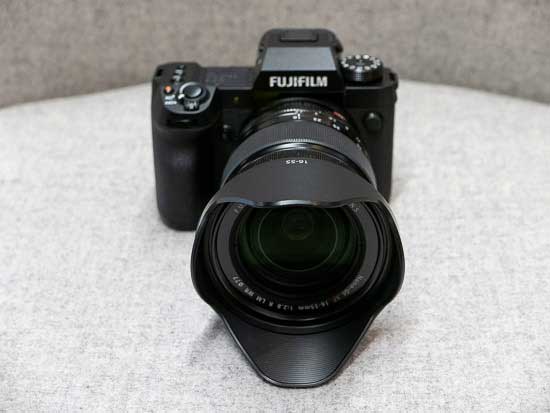
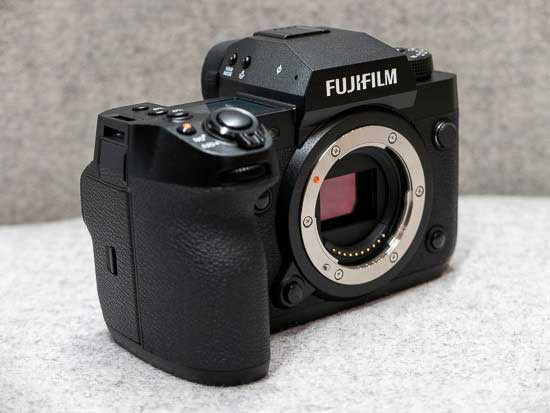

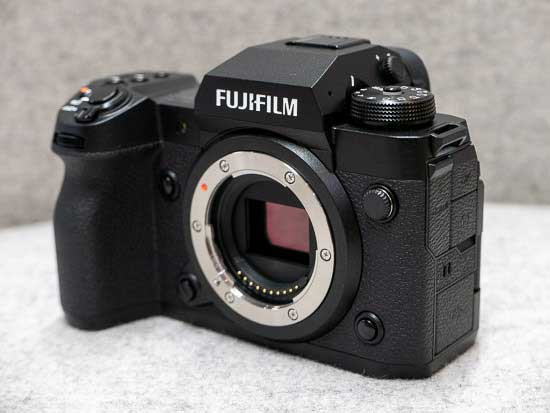
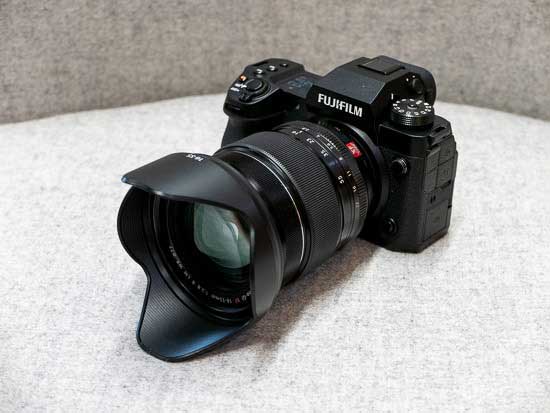

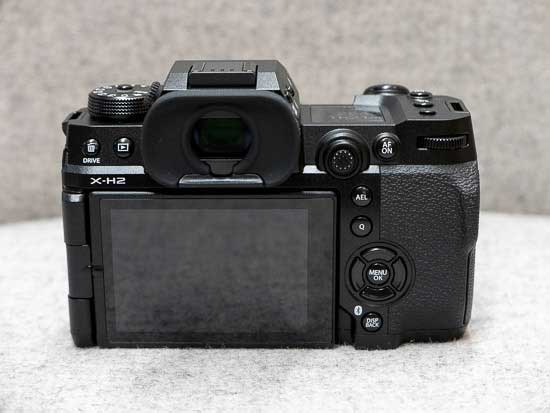
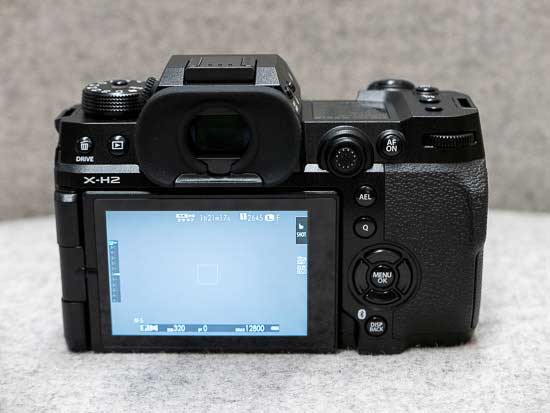

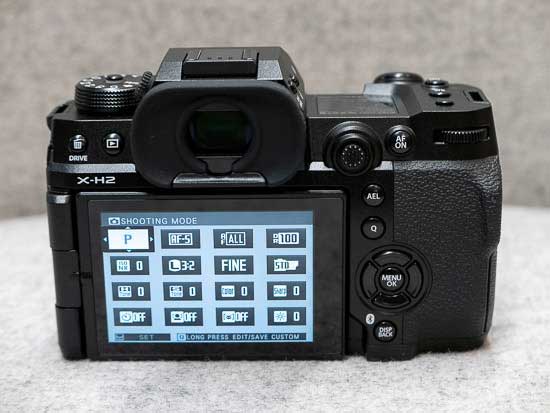
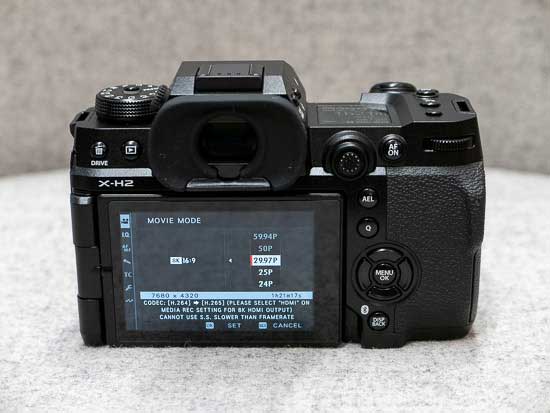
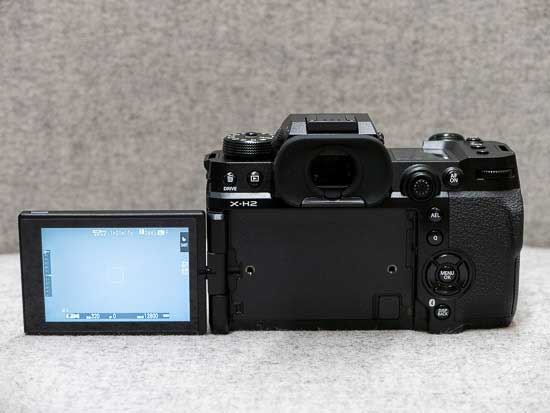


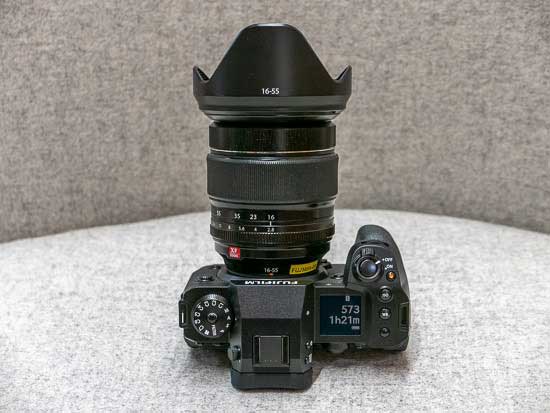
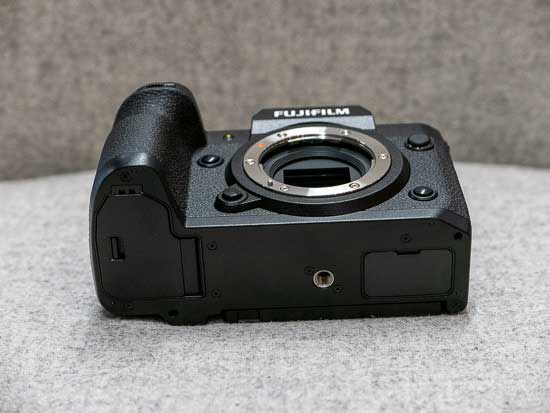
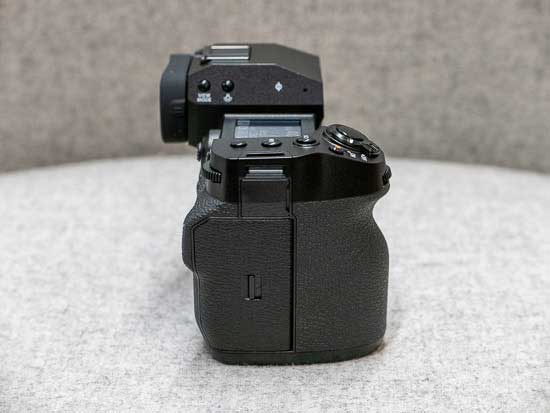



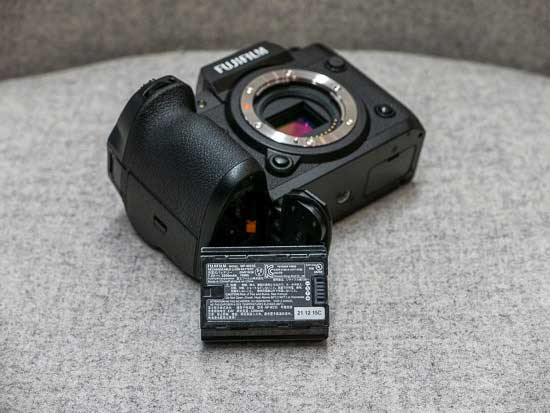
Conclusion
2022 is shaping up to be a big year for Fujifilm with the launch of not one, but two flagship APS-C cameras in the identical shapes of the speed-centric X-H2S and now the resolution-focused X-H2.
Both models represent the absolute pinnacle of what Fuji can currently achieve with an APS-C sensor and, ably supported by a long list of excellent lenses, they far surpass what the likes of Canon, Nikon and Sony have to offer with their equivalent systems.
Indeed, the two new X-H models are so good that they also represent a much cheaper, yet still very high quality alternative, to their rivals’ full-frame systems, offering comparable levels of speed and resolution without having to break the bank.
The only question for us and more importantly for you is which model to plump for? The X-H2S offers incredible 40fps burst shooting, the best video capabilities of any X-series camera, and sensible 26 megapixel resolution.
Meanwhile the new X-H2 ups the detail ante to 40 megapixels, the highest of any APS-C camera, impressively without introducing too much noise at higher ISO values, and it also offers the cherry on top of 8K/30p video recording and still blazing fast 20fps burst shooting, albeit the latter being with a modest 1.29x crop.
As the X-H2 is identical to the X-H2S apart from their nameplates, you will still need to get on-board with their very un-Fuji-like user interfaces, at least until the X-T5 is announced.
We actually think that the perhaps controversially revised control layout, with its reliance on function buttons and custom modes rather than shutter speed and ISO dials, is better suited to what is a versatile hybrid camera that lends itself to being used in a multitude of different ways. Your mileage may well differ though.
If you don’t need the high resolution, better AF and improved video capabilities of the X-H2, you can happily save quite a lot of money by opting for one of the cheaper former flagship models such as the X-T4, a deal that is sweetened even further if you prefer their more traditional user interfaces.
The X-H2 does have one major advantage over its speedy sibling, namely price. The new Fujifilm X-H2 is priced at £1899 / $1999 in the UK and USA respectively, making it the second most expensive X-series APS-C sensor camera ever released.
That title goes to the Fujifilm X-H2S, which is priced at £2499 / $2499 body only. This makes the XH2S a whopping £600 / $500 more expensive than the new XH2, a difference that is primarily driven by the stacked sensor inside it, which is much more costly to manufacture than the BSI sensor found inside the X-H2.
In summary, while the X-H2 and X-H2S may look absolutely identical, thanks to their sensor technologies they’re aimed at two quite different types of end user, although the former model’s 8K video mode will muddy the waters a little for some users. Both are outstanding cameras though – all you need to do is make sure to pick the right one…
| Ratings (out of 5) | |
|---|---|
| Design | 4.5 |
| Features | 4.5 |
| Ease-of-use | 5 |
| Image quality | 5 |
| Value for money | 5 |
Main Rivals
Listed below are some of the rivals of the Fujifilm X-H2.
The X-H2S is the fastest, most capable APS-C sensor camera that Fujifilm have ever released, but it’s also by far the most expensive. Find out exactly what this new flagship camera is capable of and who it’s aimed at by reading our complete Fuji XH2S review complete with full-size JPEG, Raw and video samples.
The Fujifilm X-T4 is the successor to the very popular X-T3, which was released in 2018, principally adding in-body image stabilisation, greatly improved battery life, a quicker and quieter mechanical shutter, enhanced continuous AF and a number of design tweaks. Can the new X-T4 improve on what was already an outstanding camera? Find out now by reading our in-depth Fujifilm X-T4 review…
The Z5 is Nikon’s brand new entry-level full-frame mirrorless camera, sitting below the mid-range Z6 and flagship Z7 models in the three-camera lineup, and above the APS-C sensor Z50. Designed to compete with the likes of the Canon EOS R, Sony A7 III and Panasonic Lumix S1, does the Z5 have what it takes to stand out in an increasingly crowded market? Find out now by reading our in-depth Nikon Z5 review, complete with full-size sample photos and videos.
The new OM-1 flagship is both the last ever Olympus camera and the first ever OM System camera. Confused? Well no need to worry, as we take an in-depth look at what this new Micro Four Thirds flagship has to offer in our OM System OM-1 review, complete with full-size sample photos and videos…
The much anticipated Panasonic GH6 is finally here! But what does this new flagship camera offer, and can it really improve on the best-selling GH5? We find out in our review of the Panasonic Lumix GH6 mirrorless camera, complete with sample photos, test shots, videos and more…
The new Sony Alpha A7 IV is a new 33 megapixel, 4K/60p video, 10fps burst shooting, cutting-edge auto-focusing hybrid full-frame mirrorless model that pulls no punches in its bid to be the only camera that you need. Find out why we think this is one of the best all-round cameras of 2021 by reading our in-depth Sony A7 IV review…
Specifications
| Model name | FUJIFILM X-H2 | |
| Lens Mount | FUJIFILM X mount | |
| Image sensor | 23.5mm x 15.6mm (APS-C) X-Trans CMOS 5 HR with primary color filter | |
| Number of effective pixels | 40.2 millions pixels | |
| Sensor Cleaning System | Ultra Sonic Vibration | |
| Image Processing Engine | X-Processor 5 | |
| Storage media | SD Card (-2GB) / SDHC Card (-32GB) / SDXC Card (-2TB) / UHS-I / UHS-II / Video Speed Class V90 / CFexpress Type B Card (-2TB)
*Please check Compatibility for more detail. |
|
| File format of still image | DCF | Compliant with Design rule for Camera File system (DCF2.0) |
| JPEG | Exif Ver.2.32*1 | |
| HEIF | 4:2:2 10bit | |
| RAW | 14bit RAW (RAF original format) | |
| TIFF | 8bit / 16bit RGB (In-camera Raw Conversion Only) | |
| Number of recorded pixels | [L] | 〈4:3〉 6864 x 5152 〈3:2〉 7728 x 5152 〈16:9〉 7728 x 4344 〈1:1〉 5152 x 5152 〈5:4〉 6432×5152 |
| [M] | 〈4:3〉 4864 x 3648 〈3:2〉 5472 x 3648 〈16:9〉 5472 x 3080 〈1:1〉 3648 x 3648 〈5:4〉 4560×3648 | |
| [S] | 〈4:3〉 3464 x 2592 〈3:2〉 3888 x 2592 〈16:9〉 3888 x 2184 〈1:1〉 2592 x 2592 〈5:4〉 3264×2592 | |
| Panorama | [L] | 〈vertical〉 9600 x 2160 〈Horizontal〉 9600 x 1440 |
| [M] | 〈vertical〉 6400 x 2160 〈Horizontal〉 6400 x 1440 | |
| Digital Tele-Converter | 2.0x / 1.4x / OFF | |
| Sensitivity | Still Image | Standard Output: AUTO1 / AUTO2 / AUTO3 /ISO125-12800 (1/3 step) Extended Output: ISO64 / ISO80 / ISO100 / ISO25600 / ISO51200 |
| Movie | Standard Output: AUTO / ISO125-12800 (1/3 step) Extended Output: ISO25600 |
|
| Exposure control | TTL 256-zone metering / Multi / Spot / Average / Center Weighted | |
| Exposure mode | P (Program AE) / A (Aperture Priority AE) / S (Shutter Speed Priority AE) / M (Manual Exposure) | |
| Exposure compensation | Still | -5.0EV – +5.0EV 1/3EV step |
| Movie | -2.0EV – +2.0EV 1/3EV step | |
| Image stabilizer | Mechanism | Image sensor shift mechanism with 5-axis compensation |
| Compensation Effect | 7.0 stops *based on CIPA standard *Pitch/yaw shake only *With XF35mmF1.4 R lens mounted |
|
| Digital Image Stabilization | Yes (movie mode only) | |
| IS MODE BOOST | Yes (movie mode only) | |
| Shutter type | Focal Plane Shutter | |
| Shutter speed | Mechanical shutter | P mode: 4sec. to 1/8000sec. A mode: 30sec. to 1/8000sec. S/M mode: 15min. to 1/8000sec. Bulb: up to 60min. |
| Electronic shutter | P mode: 4sec. to 1/180000sec. A mode: 30sec. to 1/180000sec. S/M mode: 15min. to 1/180000sec. Bulb: 1sec. Fixed | |
| Electronic front curtain shutter | P mode: 4sec. to 1/8000sec. A mode: 30sec. to 1/8000sec. S/M mode: 15min. to 1/8000sec. Bulb: up to 60min. | |
| Mechanical + Electronic shutter | P mode: 4sec. to 1/180000sec. A mode: 30sec. to 1/180000sec. S/M mode: 15min. to 1/180000sec. Bulb: up to 60min. *Mechanical shutter works until 1/8000sec. |
|
| E-front + Mechanical shutter | P mode: 4sec. to 1/8000sec. A mode: 30sec. to 1/8000sec. S/M mode: 15min. to 1/8000sec. Bulb: up to 60min. *Electronic front curtain shutter works until 1/2000sec. |
|
| E-front + Mechanical + Electronic shutter | P mode: 4sec. to 1/180000sec. A mode: 30sec. to 1/180000sec. S/M mode: 15min. to 1/180000sec. Bulb: up to 60min. *Electronic front curtain shutter works until 1/2000sec, Mechanical shutter works until 1/8000sec. *The Electronic Shutter may not be suitable for fast-moving objects or handheld shooting. Flash cannot be used. |
|
| Movie | 8K: 1/8000sec. to 1/24 sec. 6.2K: 1/8000sec. to 1/24 sec. DCI4K/4K: 1/8000sec. to 1/4 sec. FHD: 1/8000sec. to 1/4 sec. *Cannot choose slower shutter speed than framerate for some settings. |
|
| Synchronized shutter speed for flash | Mechanical shutter: 1/250sec. or slower Electronic shutter: 1/125sec. or slower |
|
| Continuous shooting | CH Electronic shutter Approx. 20fps (1.29x Crop) (JPEG 1000+ frames, Compressed RAW 1000+ frames, Lossless compressed RAW 1000+ frames, Uncompressed RAW 202 frames, Compressed RAW + JPEG 129 frames, Lossless compressed RAW + JPEG 95 frames, Uncompressed RAW + JPEG 90 frames)
CH Electronic shutter Approx. 13fps (1.29x Crop) (JPEG 1000+ frames, Compressed RAW 1000+ frames, Lossless compressed RAW 1000+ frames, Uncompressed RAW 1000+ frames, Compressed RAW + JPEG 372 frames, Lossless compressed RAW + JPEG 361 frames, Uncompressed RAW + JPEG 223 frames) CH Electronic shutter Approx. 10fps (1.29x Crop) (JPEG 1000+ frames, Compressed RAW 1000+ frames, Lossless compressed RAW 1000+ frames, Uncompressed RAW 1000+ frames, Compressed RAW + JPEG 1000+ frames, Lossless compressed RAW + JPEG 1000+ frames, Uncompressed RAW + JPEG 1000+ frames) CH Electronic shutter Approx. 13fps (JPEG 1000+ frames, Compressed RAW 1000+ frames, Lossless compressed RAW 1000+ frames, Uncompressed RAW 1000+ frames, Compressed RAW+JPEG 131 frames, Lossless compressed RAW+JPEG 131 frames, Uncompressed RAW+JPEG 127 frames) CH Electronic shutter Approx. 8.9fps (JPEG 1000+ frames, Compressed RAW 1000+ frames, Lossless compressed RAW 1000+ frames, Uncompressed RAW 1000+ frames, Compressed RAW+JPEG 769 frames, Lossless compressed RAW+JPEG 751 frames, Uncompressed RAW+JPEG 302 frames) CH Mechanical shutter Approx. 15fps (JPEG 1000+ frames, Compressed RAW 1000+ frames, Lossless compressed RAW 1000+ frames, Uncompressed RAW 400 frames, Compressed RAW+JPEG 110 frames, Lossless compressed RAW+JPEG 108 frames, Uncompressed RAW+JPEG 104 frames) CH Mechanical shutter Approx. 10fps (JPEG 1000+ frames, Compressed RAW 1000+ frames, Lossless compressed RAW 1000+ frames, Uncompressed RAW 1000+ frames, Compressed RAW+JPEG 512 frames, Lossless compressed RAW+JPEG 492 frames, Uncompressed RAW+JPEG 223 frames) CH Mechanical shutter Approx. 7.0fps (JPEG 1000+ frames, Compressed RAW 1000+ frames, Lossless compressed RAW 1000+ frames, Uncompressed RAW 1000+ frames, Compressed RAW+JPEG 1000+ frames, Lossless compressed RAW+JPEG 1000+ frames, Uncompressed RAW+JPEG 1000+ frames) Pre-shot Electronic shutter Approx. 20fps (1.29x Crop) (While half press 20 frames, After full press 1000+ frames) *No. of recordable frames are calculated based on CFexpress Type B card in a cold start |
|
| Drive Mode | AE Bracketing | 2 frames / 3 frames / 5 frames / 7 frames / 9 frames *by 1/3EV step, up to ±3EV steps |
| Film Simulation Bracketing | Any 3 types of film simulation selectable | |
| Dynamic Range Bracketing | 100% / 200% / 400% | |
| ISO sensitivity Bracketing | ±1/3EV / ±2/3EV / ±1EV | |
| White Balance Bracketing | ±1 / ±2 / ±3 | |
| Focus Bracketing | AUTO / MANUAL | |
| Multiple Exposure | Yes (Max. 9 frames) / Additive / Average / Bright / Dark | |
| HDR Mode | AUTO / 200% / 400% / 800% / 800% + | |
| Advanced Filter | Toy camera / Miniature / Pop color / High-key / Low-key / Dynamic tone / Soft focus / Partial color (Red / Orange / Yellow / Green / Blue / Purple) | |
| Pixel Shift Multi Shot | Yes | |
| Focus | Mode | Single AF / Continuous AF / MF |
| Type | Intelligent Hybrid AF (TTL contrast AF / TTL phase detection AF) | |
| Low-light Performance | Contrast: -4.0EV XF50mmF1.0 attached Phase Detection: -7.0EV XF50mmF1.0 attached |
|
| AF frame selection | Single point AF: 13×9 / 25×17 (Changeable size of AF frame) Zone AF: 3×3 / 5×5 / 7×7 from 117 areas on 13×9 grid Wide/Tracking AF: Yes (AF-S: Wide / AF-C: Tracking) All: Yes |
|
| Face/eye detection | Yes | |
| Subject detection | Yes (Animal/Bird/Automobile/Motorcycle&Bike/Airplane/Train) | |
| Flash | EF-X8 | Guide Number: approx. 11 (ISO200・m) / approx. 8 (ISO100・m) Sync. Mode: 1st Curtain / 2nd Curtain Flash Mode: TTL (TTL AUTO / STANDARD / SLOW SYNC. ) / MANUAL / COMMANDER / OFF |
| Shoe mount flash | Sync. Mode: 1st Curtain / 2nd Curtain / AUTO FP (HSS) Flash Mode: TTL (TTL AUTO / STANDARD / SLOW SYNC. ) / MANUAL / MULTI *When EF-X500 is set / OFF |
|
| Synchronized terminal | Sync. Mode: 1st Curtain / 2nd Curtain Flash Mode: MANUAL |
|
| Hot shoe | Yes (Dedicated TTL Flash compatible) | |
| Viewfinder | EVF: 0.5 inch OLED Color Viewfinder, Approx. 5.76 million dots Coverage of Viewing Area vs. Capturing Area: Approx. 100% Eyepoint: Approx. 24mm (from the Rear End of the Camera’s Eyepiece) Diopter Adjustment: -5~+3m-1 Magnification: 0.80x with 50mm Lens (35mm Equivalent) at infinity and Diopter set to -1.0m-1 Diagonal Angle of View: approx. 40° (Horizontal angle of view: approx. 32° ) Built-In Eye Sensor |
|
| LCD monitor | 3.0 inch vari-angle Touch Screen Color LCD Monitor Aspect Ratio: 3:2 Dots: Approx. 1.62 million dots |
|
| Touch Screen Mode | Shooting Mode | Shooting, AF, Focus Area, OFF, Double Tap Setting (ON/OFF), Touch Function Setting (ON/OFF), Touch Zoom (ON/OFF), EVF Touch Screen Area Setting |
| Playback Mode | Swipe, Pinch-in / Pinch-out, Double-tap, Drag | |
| Sub LCD monitor | 1.28 inch Monochrome LCD Monitor Aspect Ratio: 1:1 Dots: 128×128-dot |
|
| Movie recording | File format | MOV: Apple ProRes 422 HQ, Linear PCM (Stereo sound 24bit / 48KHz sampling) Apple ProRes 422, Linear PCM (Stereo sound 24bit / 48KHz sampling) Apple ProRes 422 LT, Linear PCM (Stereo sound 24bit / 48KHz sampling) HEVC/H.265, Linear PCM (Stereo sound 24bit / 48KHz sampling) MPEG-4 AVC/H.264, Linear PCM (Stereo sound 24bit / 48KHz sampling) MP4: MPEG-4 AVC/H.264, AAC |
| Movie compression | All Intra / Long GOP | |
| File size Frame rate Bitrate |
[8K(16:9)] 7680 x 4320 29.97p/25p/24p/23.98p 720Mbps/360Mbps/200Mbps/100Mbps/50Mbps [6.2K(16:9)] 6240 x 3510 29.97p/25p/24p/23.98p 720Mbps/360Mbps/200Mbps/100Mbps/50Mbps [DCI4K HQ(17:9)] 4096 x 2160 29.97p/25p/24p/23.98p 720Mbps/360Mbps/200Mbps/100Mbps/50Mbps [4K HQ(16:9)] 3840 x 2160 29.97p/25p/24p/23.98p 720Mbps/360Mbps/200Mbps/100Mbps/50Mbps [DCI4K(17:9)] 4096 x 2160 59.94p/50p/29.97p/25p/24p/23.98p 720Mbps/360Mbps/200Mbps/100Mbps/50Mbps [4K(16:9)] 3840 x 2160 59.94p/50p/29.97p/25p/24p/23.98p 720Mbps/360Mbps/200Mbps/100Mbps/50Mbps [Full HD(17:9)] 2048 x 1080 59.94p/50p/29.97p/25p/24p/23.98p 720Mbps/360Mbps/200Mbps/100Mbps/50Mbps [Full HD(16:9)] 1920 x 1080 59.94p/50p/29.97p/25p/24p/23.98p 720Mbps/360Mbps/200Mbps/100Mbps/50Mbps [Full HD(17:9) High speed rec.] 2048 x 1080 240p/200p/120p/100p 720Mbps(recording)/360Mbps(recording)/200Mbps(recording) [Full HD(16:9) High speed rec.] 1920 x 1080 240p/200p/120p/100p 720Mbps(recording)/360Mbps(recording)/200Mbps(recording) *For recording movies, use a CFexpress Type B card or SD memory card with UHS Speed Class 3 or higher. |
|
| Film simulation mode | 19 modes (PROVIA/Standard, Velvia/Vivid, ASTIA/Soft, Classic Chrome, PRO Neg.Hi, PRO Neg.Std, Classic Neg., Nostalgic Neg., ETERNA/Cinema, ETERNA BLEACH BYPASS, ACROS, ACROS + Ye Filter, ACROS + R Filter, ACROS + G Filter, Black & White, Black & White + Ye Filter, Black & White + R Filter, Black & White + G Filter, Sepia) | |
| Monochromatic Color | Yes | |
| Grain Effect | Roughness | STRONG, WEAK, OFF |
| Size | LARGE, SMALL | |
| Color Chrome Effect | STRONG, WEAK, OFF | |
| Color chrome Blue | STRONG, WEAK, OFF | |
| Smooth Skin Effect | STRONG, WEAK, OFF | |
| Dynamic range setting | Still | AUTO / 100% / 200% / 400% ISO restriction: DR100%: No limit、DR200%: ISO250 or more、DR400%: ISO500 or more |
| Movie | 100% / 200% / 400% ISO restriction: DR100%: No limit、DR200%: ISO250 or more、DR400%: ISO500 or more |
|
| White balance | Auto | White Priority / Auto / Ambience Priority |
| Custom | Custom1 – 3 | |
| Color temperature selection | 2500K-10000K | |
| Preset | Daylight / Shade / Fluorescent Light-1 / Fluorescent Light-2 / Fluorescent Light-3 / Incandescent Light / Underwater | |
| Clarity setting | ±5 steps | |
| Self-timer | 10sec. / 2sec. | |
| Interval timer shooting | Yes (Setting : Interval, Number of shots, Starting time, Interval timer shooting exposure smoothing) | |
| Wireless transmitter | Standard | IEEE802.11a/b/g/n/ac (standard wireless protocol) |
| Encryption | WPA/WPA2 mixed mode, WPA3 | |
| Access mode | Infrastructure | |
| Bluetooth® | Standartd | Bluetooth Ver. 4.2 (Bluetooth low energy) |
| Operating frequency (Center frequency) | 2402 – 2480MHz | |
| Terminal | Digital interface | USB Type-C (USB3.2 Gen2x1) |
| HDMI output | HDMI connector (Type A) | |
| Others | ø3.5mm, stereo mini connector (Microphone) ø3.5mm, stereo mini connector (Headphone) ø2.5mm, Remote Release Connector Hot shoe Synchronized terninal |
|
| Power supply | NP-W235 Li-ion battery (included) | |
| Battery life for still images*2 | Economy Mode: Approx. 680 frames Normal Mode: Approx. 540 frames *When XF35mmF1.4 R is set |
|
| Actual battery life of movie capture*2 | 8K: Approx. 70min. (29.97p) 4K: Approx. 75min. (59.94p) Full HD: Approx. 85min. (59.94p), Approx. 90min. (120P) *Face detection is set to OFF |
|
| Continuance battery life of movie capture*2 | 8K: Approx. 100min. (29.97p) 4K: Approx. 120min. (59.94p) Full HD: Approx. 140min. (59.94p) *Face detection is set to OFF |
|
| Dimensions | Width: 136.3mm Height: 92.9mm Depth: 84.6mm (Minimum Depth: 42.8mm) |
|
| Weight | including battery and memory card: Approx. 660g excluding battery and memory card: Approx. 579g |
|
| Operation Environment | Operating Temperature | -10℃ – +40℃ |
| Operating Humidity | 10% – 80% (no condensation) | |
| Starting up period | Approx. 0.49sec. | |
| Accessories included | Li-ion battery NP-W235 AC power adapter AC-5VJ Plug adapter USB cable Shoulder strap Body cap Hot shoe cover File transmitter/vertical battery grip connector cover Memory card slot cover Sync terminal cover Cooling fan connector cover Cable protector Owner’s manual |
|
- *1 Exif 2.32 is a digital camera file format that contains a variety of shooting information for optimal printing
- *2 Approximate number of frames or movie recording time that can be taken with a fully-charged based on CIPA Standard.
Movie Specification
Media Rec (CFexpress Type B card / SD memory card)
| Resolution/Aspect | Size | Frame rate | File format/Compression | Bit rate*2 | Bit depth | HDMI outupt Resolution(Frame rate)/Sampling/Bit depth |
Crop Magnification | ||
|---|---|---|---|---|---|---|---|---|---|
| DIS ON | DIS OFF | ||||||||
| 8K 16:9 | 7680 x 4320 | 29.97p 25.00p 24.00p 23.98p |
ProRes 422 HQ MOV*1 | 3520Mbps(29.97p)*3 | 10bit | FHD 4:2:2 10bit*4 | Not possible |
1.0x | |
| ProRes 422 MOV*1 | 2352Mbps(29.97p)*3 | ||||||||
| ProRes 422 LT MOV*1 | 1632Mbps(29.97p)*3 | ||||||||
| H.265 All-Intra 4:2:2 MOV H.265 All-Intra 4:2:0 MOV |
720Mbps 360Mbps |
FHD 4:2:2 10bit (When H.265 All-Intra 4:2:2 MOV selected)*4 4K 4:2:2 10bit (When H.265 All-Intra 4:2:0 MOV selected)*4 |
Not possible |
1.0x | |||||
| H.265 Long GOP 4:2:2 MOV H.265 Long GOP 4:2:0 MOV |
720Mbps 360Mbps 200Mbps 100Mbps 50Mbps |
FHD 4:2:2 10bit (When H.265 Long GOP 4:2:2 MOV selected)*4 4K 4:2:2 10bit (When H.265 Long GOP 4:2:0 MOV selected)*4 |
Not possible |
1.0x | |||||
| 6.2K 16:9 | 6240 x 3510 | 29.97p 25.00p 24.00p 23.98p |
ProRes 422 HQ MOV*1 | 2324Mbps(29.97p)*3 | 10bit | FHD 4:2:2 10bit*4 | Not possible |
1.0x | |
| ProRes 422 MOV*1 | 1553Mbps(29.97p)*3 | ||||||||
| ProRes 422 LT MOV*1 | 1077Mbps(29.97p)*3 | ||||||||
| H.265 All-Intra 4:2:2 MOV H.265 All-Intra 4:2:0 MOV |
720Mbps 360Mbps |
FHD 4:2:2 10bit (When H.265 All-Intra 4:2:2 MOV selected)*4 4K 4:2:2 10bit (When H.265 All-Intra 4:2:0 MOV selected)*4 |
Not possible |
1.0x | |||||
| H.265 Long GOP 4:2:2 MOV H.265 Long GOP 4:2:0 MOV |
720Mbps 360Mbps 200Mbps 100Mbps 50Mbps |
FHD 4:2:2 10bit (When H.265 Long GOP 4:2:2 MOV selected)*4 4K 4:2:2 10bit (When H.265 Long GOP 4:2:0 MOV selected)*4 |
Not possible |
1.0x | |||||
| DCI4K HQ 17:9 4K HQ 16:9 |
4096 x 2160 3840 x 2160 |
29.97p 25.00p 24.00p 23.98p |
ProRes 422 HQ MOV*1 | 939Mbps(DCI 4K 29.97p)*3 | 10bit | DCI4K/4K 4:2:2 10bit | Not possible |
1.0x | |
| ProRes 422 MOV*1 | 627Mbps(DCI 4K 29.97p)*3 | ||||||||
| ProRes 422 LT MOV*1 | 435Mbps(DCI4K 29.97p)*3 | ||||||||
| H.265 All-Intra 4:2:2 MOV H.265 All-Intra 4:2:0 MOV |
720Mbps 360Mbps |
Not possible |
1.0x | ||||||
| H.265 Long GOP 4:2:2 MOV H.265 Long GOP 4:2:0 MOV |
720Mbps 360Mbps 200Mbps 100Mbps 50Mbps |
Not possible |
1.0x | ||||||
| H.264 All-Intra 4:2:0 MOV | 360Mbps | 8bit | DCI4K/4K 4:2:2 8bit | Not possible |
1.0x | ||||
| H.264 Long GOP 4:2:0 MOV H.264 Long GOP 4:2:0 MP4 |
360Mbps 200Mbps 100Mbps 50Mbps |
Not possible |
1.0x | ||||||
| DCI4K 17:9 4K 16:9 |
4096 x 2160 3840 x 2160 |
59.94p 50.00p 29.97p 25.00p 24.00p 23.98p |
ProRes 422 HQ MOV*1 | 1877Mbps(DCI4K 59.94p)*3 | 10bit | DCI4K/4K 4:2:2 10bit | Not possible |
59.94p/50.00p:1.14x 29.97p/25.00p/24.00p/23.98p:1.0x |
|
| ProRes 422 MOV*1 | 1254Mbps(DCI4K 59.94p)*3 | ||||||||
| ProRes 422 LT MOV*1 | 870Mbps(DCI4K 59.94p)*3 | ||||||||
| H.265 All-Intra 4:2:2 MOV H.265 All-Intra 4:2:0 MOV |
720Mbps 360Mbps |
1.1x | 59.94p/50.00p:1.14x 29.97p/25.00p/24.00p/23.98p:1.0x |
||||||
| H.265 Long GOP 4:2:2 MOV H.265 Long GOP 4:2:0 MOV |
720Mbps 360Mbps 200Mbps 100Mbps 50Mbps |
1.1x | 59.94p/50.00p:1.14x 29.97p/25.00p/24.00p/23.98p:1.0x |
||||||
| H.264 All-Intra 4:2:0 MOV | 360Mbps | 8bit | DCI4K/4K 4:2:2 8bit | 1.1x | 1.0x | ||||
| H.264 Long GOP 4:2:0 MOV H.264 Long GOP 4:2:0 MP4 |
360Mbps 200Mbps 100Mbps 50Mbps |
1.1x | 1.0x | ||||||
| FHD 17:9 FHD 16:9 |
2048 x 1080 1920 x 1080 |
59.94p 50.00p 29.97p 25.00p 24.00p 23.98p |
ProRes 422 HQ MOV*1 | 440Mbps(FHD16:9 59.94p)*3 | 10bit | FHD 4:2:2 10bit*5 | Not possible |
59.94p/50.00p:1.14x 29.97p/25.00p/24.00p/23.98p:1.0x |
|
| ProRes 422 MOV*1 | 294Mbps(FHD16:9 59.94p)*3 | ||||||||
| ProRes 422 LT MOV*1 | 204Mbps(FHD16:9 59.94p)*3 | ||||||||
| H.265 All-Intra 4:2:2 MOV H.265 All-Intra 4:2:0 MOV |
720Mbps 360Mbps |
1.1x | 59.94p/50.00p:1.14x 29.97p/25.00p/24.00p/23.98p:1.0x |
||||||
| H.265 Long GOP 4:2:2 MOV H.265 Long GOP 4:2:0 MOV |
720Mbps 360Mbps 200Mbps 100Mbps 50Mbps |
1.1x | 59.94p/50.00p:1.14x 29.97p/25.00p/24.00p/23.98p:1.0x |
||||||
| H.264 All-Intra 4:2:0 MOV | 360Mbps | 8bit | FHD 4:2:2 8bit*5 | 1.1x | 59.94p/50.00p:1.14x 29.97p/25.00p/24.00p/23.98p:1.0x |
||||
| H.264 Long GOP 4:2:0 MOV H.264 Long GOP 4:2:0 MP4 |
360Mbps 200Mbps 100Mbps 50Mbps |
1.1x | 59.94p/50.00p:1.14x 29.97p/25.00p/24.00p/23.98p:1.0x |
||||||
| High speed FHD 17:9 FHD 16:9 |
2048 x 1080 1920 x 1080 |
240fps(4×/8×/10×) 200fps(4×/8×) 120p (2x/4x/5x) 100p (2x/4x) |
ProRes 422 HQ MOV*1 | 1760Mbps (when recording FHD16:9 240p)*3 |
10bit | FHD(59.94p) 4:2:2 10bit*6 | Not possible |
1.23x | |
| ProRes 422 MOV*1 | 1176Mbps (when recording FHD16:9 240p)*3 |
||||||||
| ProRes 422 LT MOV*1 | 816Mbps (when recording FHD16:9 240p)*3 |
||||||||
| H.265 All-Intra 4:2:2 MOV H.265 All-Intra 4:2:0 MOV |
720Mbps (when recording) 360Mbps (when recording) |
||||||||
| H.265 Long GOP 4:2:2 MOV H.265 Long GOP 4:2:0 MOV |
720Mbps (when recording) 360Mbps (when recording) 200Mbps (when recording) |
||||||||
| H.264 All-Intra 4:2:0 MOV | 360Mbps (when recording) | 8bit | FHD(59.94p) 4:2:2 8bit*6 | ||||||
| H.264 Long GOP 4:2:0 MOV H.264 Long GOP 4:2:0 MP4 |
360Mbps (when recording) 200Mbps (when recording) |
||||||||
HDMI Output
| Resolution/Aspect | Size | Frame rate | HDMI outupt Resolution/Sampling/Bit depth |
Crop Magnification | |||
|---|---|---|---|---|---|---|---|
| DIS ON | DIS OFF | ||||||
| 8K 16:9 | 7680 x 4320 | 29.97p 25.00p 24.00p 23.98p |
8K 4:2:2 10bit | Not possible |
1.0x | ||
| 6.2K 16:9 | 6240 x 3510 | 29.97p 25.00p 24.00p 23.98p |
FHD 4:2:2 10bit*4 | Not possible |
1.0x | ||
| DCI4K HQ 17:9 4K HQ 16:9 |
4096 x 2160 3840 x 2160 |
29.97p 25.00p 24.00p 23.98p |
DCI4K/4K 4:2:2 10bit | Not possible |
1.0x | ||
| DCI4K 17:9 4K 16:9 |
4096 x 2160 3840 x 2160 |
59.94p 50.00p 29.97p 25.00p 24.00p 23.98p |
DCI4K/4K 4:2:2 10bit | 1.1x | 59.94p/50.00p:1.14x 29.97p/25.00p/24.00p/23.98p:1.0x |
||
| FHD 17:9 FHD 16:9 |
2048 x 1080 1920 x 1080 |
59.94p 50.00p 29.97p 25.00p 24.00p 23.98p |
FHD 4:2:2 10bit *5 | 1.1x | 59.94p/50.00p:1.14x 29.97p/25.00p/24.00p/23.98p:1.0x |
||
HDMI Output (High speed REC HDMI ONLY)
| Resolution/Aspect | Size | Frame rate | HDMI outupt Resolution(Frame rate)/Sampling/Bit depth |
Crop Magnification | |||
|---|---|---|---|---|---|---|---|
| DIS ON | DIS OFF | ||||||
| FHD 16:9 | 1920 x 1080 | 120p 100p |
FHD(120p/100p) 4:2:2 10bit | 不可 | 1.23x | ||
HDMI RAW Output
| Resolution/Aspect | Size | Frame rate | Crop Magnification | ||
|---|---|---|---|---|---|
| DIS ON | DIS OFF | ||||
| 8K 16:9 | 7680 x 4320 | 29.97p 25.00p 24.00p 23.98p |
不可 | 1.0x | |
- *1 ProRes codec can be recorded to only CFexpress Type B card
- *2 Bit rate will be changed depend on the subject
- *3 Bit rate for ProRes codec can not be selected
- *4 The resolution from HDMI output is different from selected setting
- *5 When the aspect ratio is not 16:9, the image is output in 16:9 with a black band.
- *6 The frame rate from HDMI output is different from selected setting


